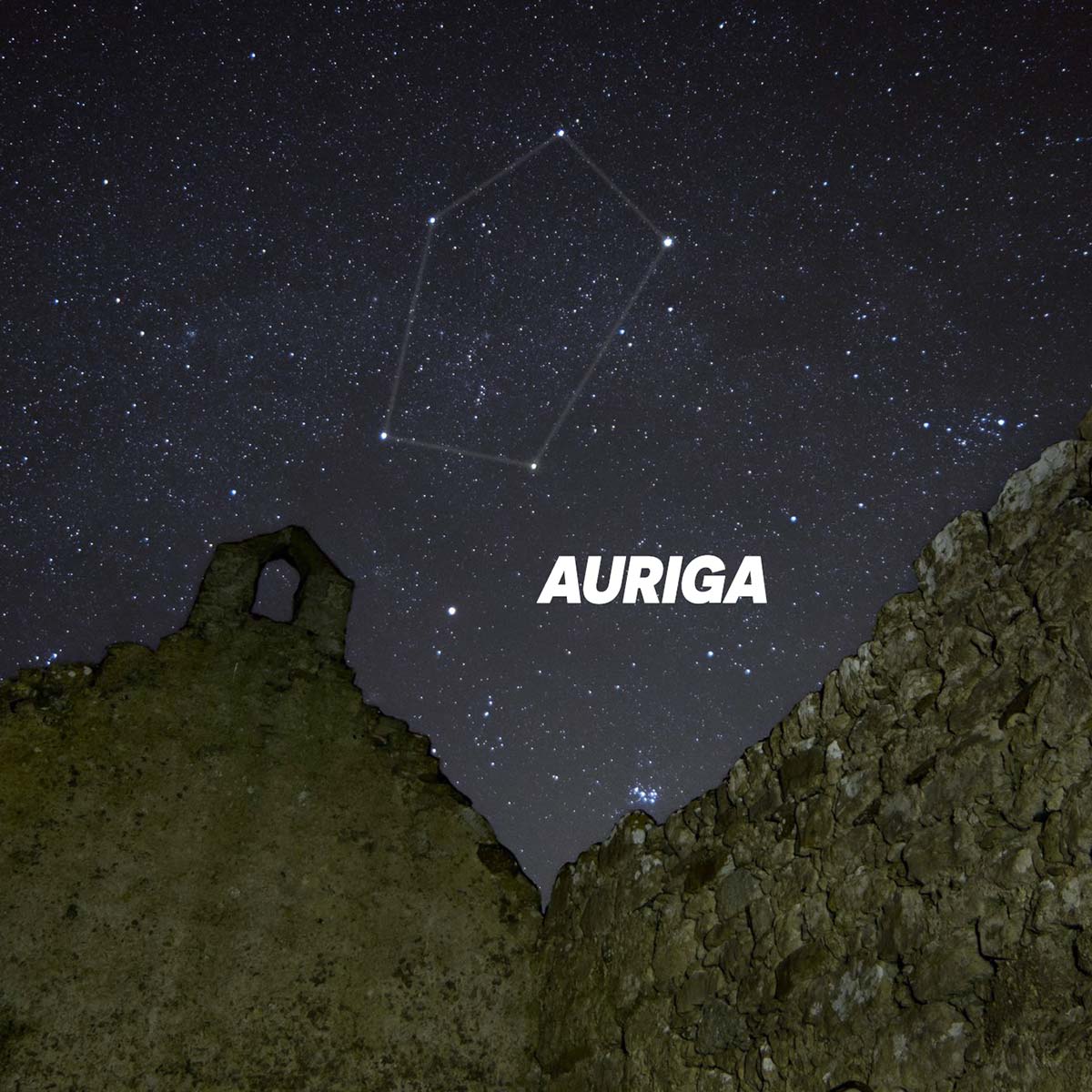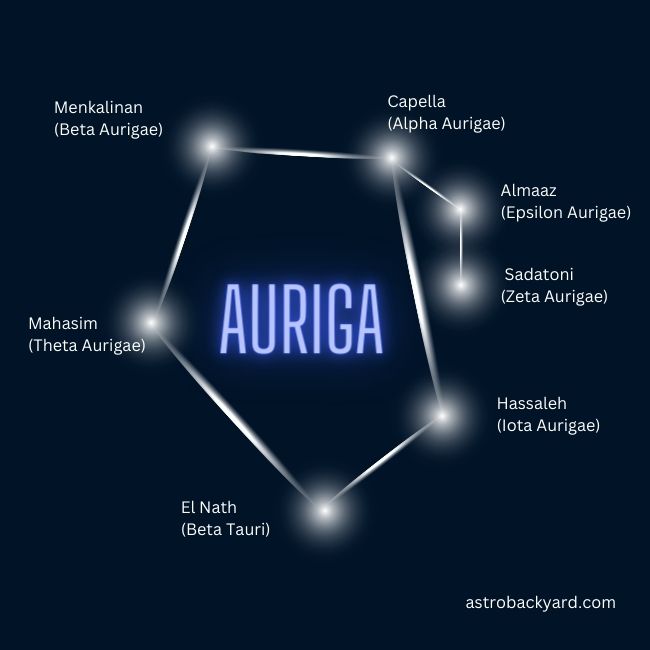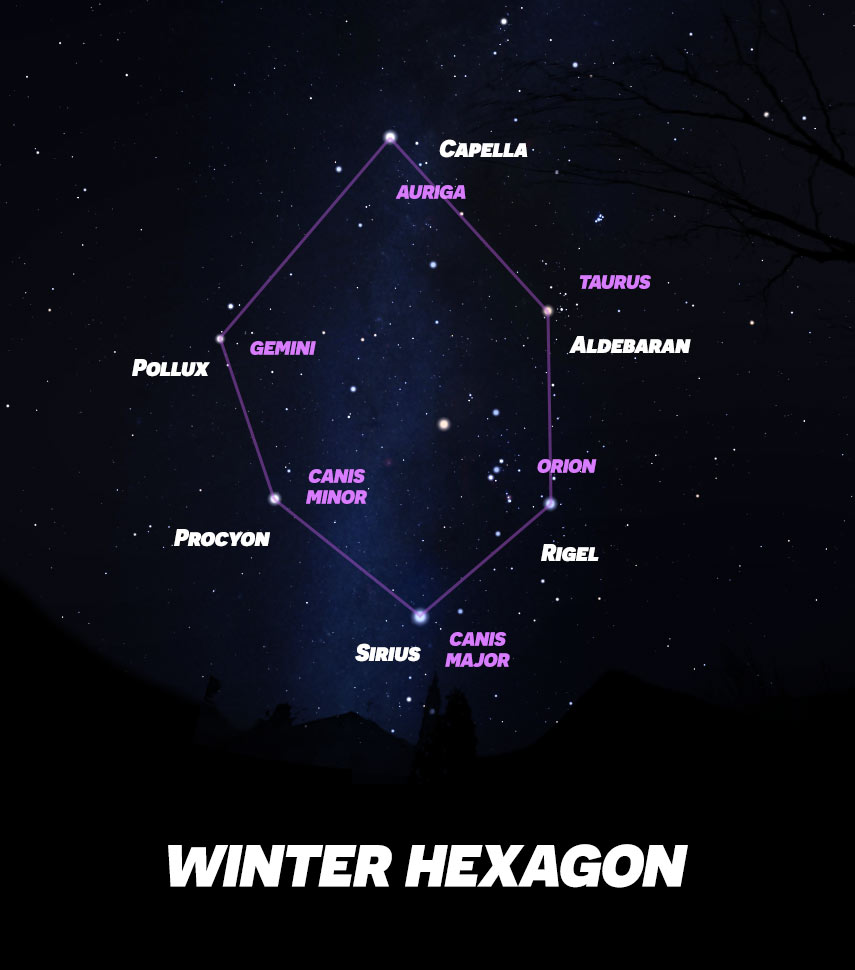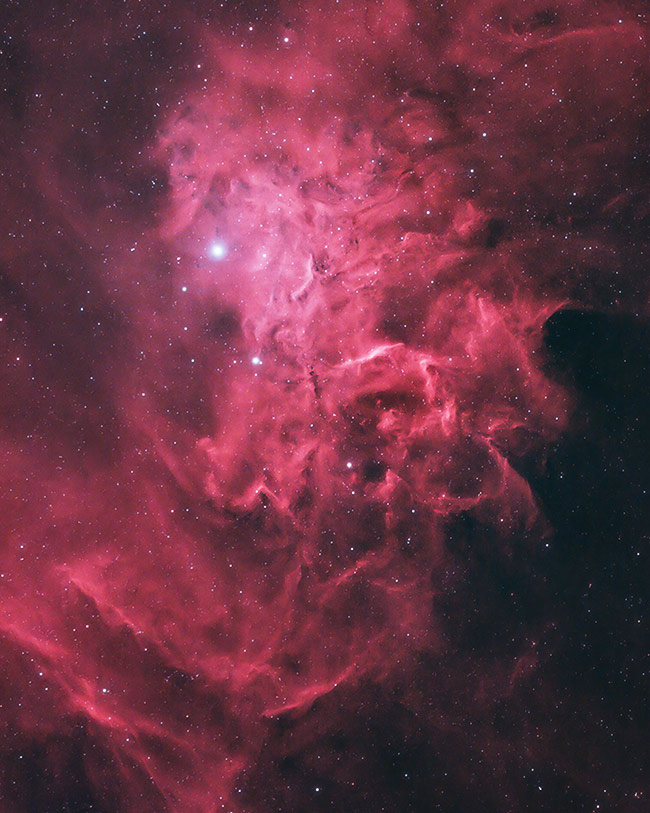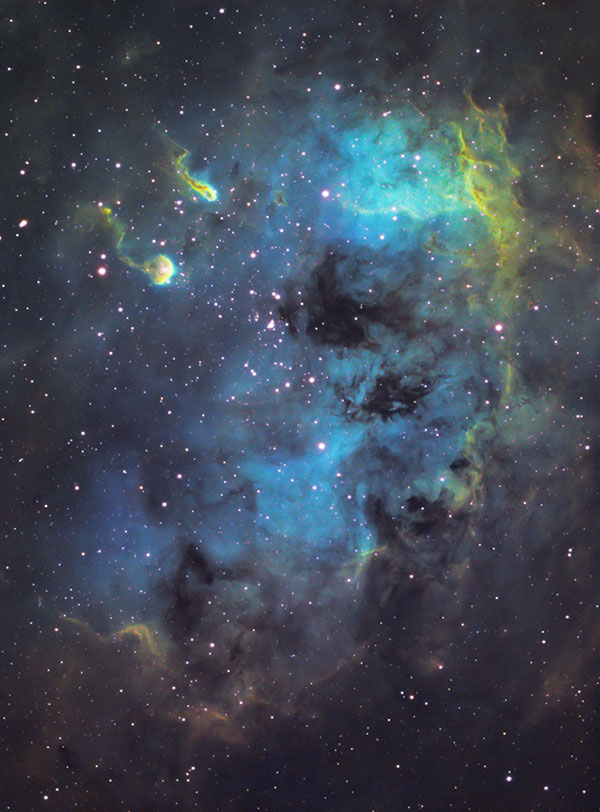Auriga Constellation | The Charioteer
The constellation Auriga shines above a ruined chapel in the UK. Sam Roberts.
Auriga, pronounced aw-RYE-guh, is a constellation in the northern hemisphere. It is shaped like a pentagon and can be seen most prominently during the winter evenings. However, due to its declination, those below -34° will have either partial views of the constellation or it will be hidden below by the horizon.
Though this constellation is not particularly well known, it contains the sixth brightest star in the night sky, Capella. This star connects Auriga to five other constellations with bright stars that make up the Winter Hexagon asterism.
Its name is Latin, meaning charioteer, as it relates to the various versions of mythology. Though depictions of Auriga have varied over the years, traditionally it is represented as a chariot and its driver who is holding the reins of the chariot in the right hand and a goat and two kids in the other.
Auriga Constellation Details
- Symbolism: the Charioteer
- Brightest star: Capella
- Number of stars: 10 named stars
- Size: 657 sq. deg.
- Right Ascension: 04h 37m 54.4293s–07h 30m 56.1899s
- Declination: 56.1648331°–27.8913116°
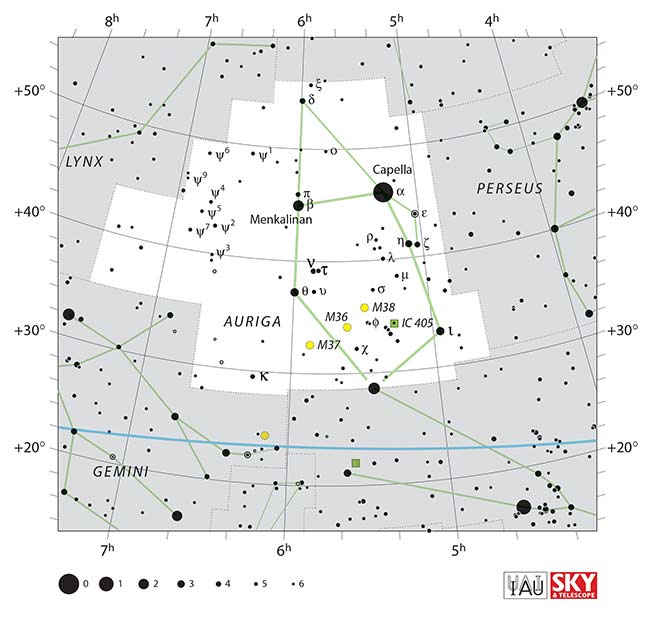
Stars in the Auriga Constellation
According to the International Astronomical Union (IAU), there are ten named stars in the Auriga constellation:
- Almaaz
- Capella
- Haedus
- Hassaleh
- Lucilinburhuc
- Mahasim
- Menkalinan
- Nervia
- Sadatoni
- Tevel
Below are the main stars that make up the charioteer constellation shape:
- Capella (Alpha Aurigae)
- Menkalinan (Beta Aurigae)
- Mahasim (Theta Aurigae)
- Hassaleh (Iota Augigae)
- Almaaz (Epsilon Aurigae)
- Sadatoni (Zeta Aurigae)
Stars that form the Auriga Constellation shape
The southernmost star in the Auriga constellation shape (traditionally known as El Nath) is an unofficially shared star between Auriga and the Taurus constellation. This star, known as Beta Tauri, actually belongs to the Taurus constellation.
Another noteworthy star in the Auriga constellation borders is AE Aurigae, a blue O-type main sequence dwarf star that lights the Flaming Star Nebula. It is 1,300 light-years from Earth with a varying brightness. It is also thought to be a runaway star that was ejected during a collision of two binary star groups.
Brightest Star in Auriga
The brightest star in the Auriga constellation is Capella at approximately 43 light-years away from Earth. With a magnitude of 0.08, Capella is the sixth brightest star in the sky and the third brightest in the north celestial hemisphere behind Vega and Arcturus.
It is the closest first magnitude star to Polaris and never sets below the horizon for observers north of 44°N. Due to its declination, Capella is not visible in certain locations south of 44°S such as Argentina and Chile.
Though it looks like a single star, Capella is actually a multiple star system that includes two binary pairs of stars: Capella Aa/Capella Ab and Capella H/Capella L. Two of the stars are yellow giant stars (Capella Aa and Capella Ab) and the other pair (Capella H and Cepella L) are cool red dwarf stars.
The Winter Hexagon
The Winter Hexagon, also known as the Winter Circle or Oval, is an asterism with six vertices formed by Capella and stars from five other constellations.
The stars that make up the Winter Hexagon include:
- Capella (Auriga)
- Aldebaran (Taurus)
- Rigel (Orion)
- Sirius (Canis Major)
- Procyon (Canis Minor)
- Pollux (Gemini)
For many, this asterism can be seen most prominently from December to March.
How to find the Auriga Constellation
Auriga is visible around the halfway point between Orion’s Belt and Polaris, so you can use the constellation Orion to help you find it.
Above Orion is the Taurus constellation which will also help you find the southern most point in the Auriga pentagon shape.
You can also look for the following constellations surrounding Auriga to help you find it: Perseus, Taurus, Gemini and Lynx.
When can you see Auriga?
Auriga, and its bright, golden star Capella, will appear in the west-northwest sky a few hours after sunset.
In the northern hemisphere, the Auriga constellation is most prominent in the winter months, with the best views in late February to early March.
Deep Sky Objects
Due to its proximity to the Milky Way, this particular constellation includes many bright open clusters which are popular deep-sky targets.
M36/NGC 1960: includes ten stars with variations in magnitudes. It is over 4,000 light-years away.
M37/NGC 2099: the brightest open cluster in the constellation, approximately 4,500 light-years from Earth. It contains over 500 identified stars.
M38/NGC 1912: the closest. of the open clusters at 3,480 light-years away from Earth. This open cluster features a yellow giant with an apparent magnitude of +7.9.
Flaming Star Nebula: an emission nebula also known as IC 405, SH 2-229 or Caldwell 31.
This deep-sky object, shining at a magnitude of +6.0, can be found north of the celestial equator. It contains the irregular variable star AE Aurigae, which adds a bluish color to the otherwise red hydrogen emission gas that represents the ‘flame’.
Flaming Star Nebula by Trevor Jones
IC410: is an emission nebula also referred to as the Tadpoles Nebula thanks to the two tadpole like gas structures. The tadpole structures themselves are around 10 light-years long, formed by wind and radiation. Similar to the Pillars of Creation, these are likely sites or ongoing star formation.
The Tadpoles by Trevor Jones
